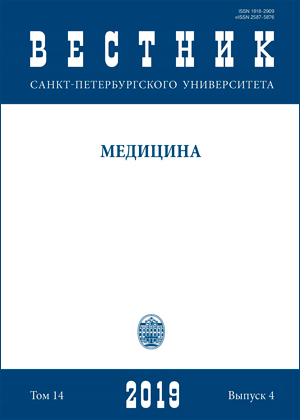Laboratory diagnosis of peripheral autonomic failure of various origins
DOI:
https://doi.org/10.21638/spbu11.2019.408Abstract
Primary forms of peripheral vegetative insufficiency are relatively rare. This group includes peripheral vegetative insufficiency associated with damage to segmental vegetative structures: sympathetic and parasympathetic nuclei, nodes, peripheral pre- and postganglionic fibers. In the clinical picture of the disease, there are signs of a decrease in the function of the autonomic nervous system, which manifests as cardiovascular, respiratory, genitourinary, gastrointestinal and some other disorders. Since the symptoms are non-specific, autoimmune forms of peripheral vegetative insufficiency are difficult to diagnose. The equipment and methods used in clinical laboratories do not provide reliable diagnostics. Therefore, the identification of new significant diagnostic markers of the diseases, including autoantibodies to acetylcholinesterase, α3-nicotinic acetylcholine receptor and β2-adrenergic receptors, the development on their basis of modern test systems and the introduction of these systems in the practice of neurological medical centers is an important task.
Keywords:
autoimmune diseases, autonomic nervous system, western blot, ELISA, GnRH, α3-nAСhR
Downloads
References
References
Downloads
Published
How to Cite
Issue
Section
License
Articles of "Vestnik of Saint Petersburg University. Medicine" are open access distributed under the terms of the License Agreement with Saint Petersburg State University, which permits to the authors unrestricted distribution and self-archiving free of charge.




